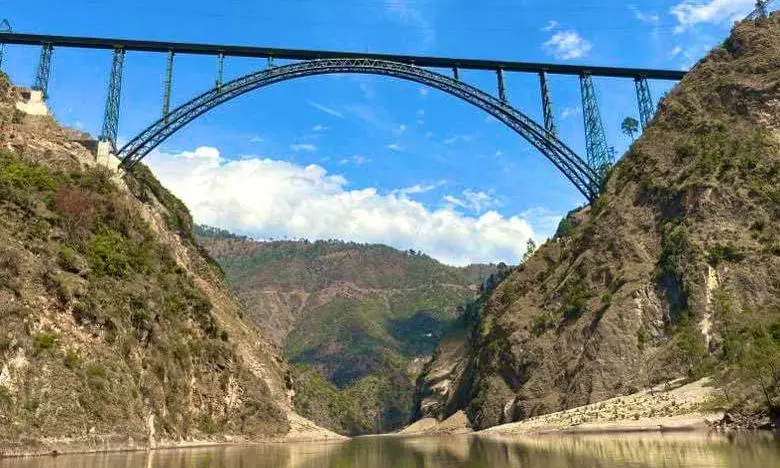
- Home
- India
- World
- Premium
- THE FEDERAL SPECIAL
- Analysis
- States
- Perspective
- Videos
- Sports
- Education
- Entertainment
- Elections
- Features
- Health
- Business
- Series
- In memoriam: Sheikh Mujibur Rahman
- Bishnoi's Men
- NEET TANGLE
- Economy Series
- Earth Day
- Kashmir’s Frozen Turbulence
- India@75
- The legend of Ramjanmabhoomi
- Liberalisation@30
- How to tame a dragon
- Celebrating biodiversity
- Farm Matters
- 50 days of solitude
- Bringing Migrants Home
- Budget 2020
- Jharkhand Votes
- The Federal Investigates
- The Federal Impact
- Vanishing Sand
- Gandhi @ 150
- Andhra Today
- Field report
- Operation Gulmarg
- Pandemic @1 Mn in India
- The Federal Year-End
- The Zero Year
- Science
- Brand studio
- Newsletter
- Elections 2024
- Events
- Home
- IndiaIndia
- World
- Analysis
- StatesStates
- PerspectivePerspective
- VideosVideos
- Sports
- Education
- Entertainment
- ElectionsElections
- Features
- Health
- BusinessBusiness
- Premium
- Loading...
Premium - Events

Community says lack of structured rehabilitation policy by Centre has forced many Pandits to migrate and lose connection with their roots, while others still await justice
On April 19, when Kashmir Valley’s rail link with the rest of the country becomes operational for the first time, the move will be more than just symbolic and not a mere infrastructure upgrade.
In terms of integrating the valley with the Indian mainline – not to mention the engineering feat achieved by Indian technicians – it will be a milestone.
Earlier this week, a trial run of a special Vande Bharat train was conducted on the 272-km Udhampur-Srinagar-Baramulla section, which connects Kashmir with the rest of the country. Trains currently run between Sangaldan in the Jammu region and Kashmir’s Baramulla.
Mixed feelings for Kashmiri Pandits
For the displaced Kashmiri Pandit community, who have sought a return to the valley that they were compelled to leave in 1990 when terrorist violence reached a new high, the move is fraught with mixed feelings. Many plans, official resolutions and good intentions later, they find themselves stranded.
Also read: Kashmiri Pandits at Houston meet Modi, thank him for revoking Article 370
While the abolition of Article 370 and removal of special status for the erstwhile state of Jammu and Kashmir were steps that provided hope to the embattled Kashmiri Pandits, clearly, they were mere first steps towards reaching an equitable solution to their troubles.
Many other moves aimed at relief and rehabilitation were to follow, which sadly have not happened the way many visualised it would.
Turbulent times
While the killings of Kashmiri Pandits and the grave civil disorder in the Kashmir valley is a much-documented body of work, the rehabilitation of those who became refugees in their own land in the late 1980s, is relatively lesser known.
Truth to tell, while figures remain hazy and contestable, some experts like Sanjay Tickoo of the Kashmiri Pandit Sangharsh Samiti (KPSS) say that there were 77,137 Kashmiri Pandit families living in the Kashmir Valley as on December 31, 1989. Currently, they are reduced to 500-plus families – even as the migration continues to date. Tickoo is a rare Kashmiri Pandit, who never left the Valley, even during its worst days, the turbulent extremism of the late 1980s.
Severed roots
Another Kashmiri Pandit activist, Vinod Pandita, says more than seven lakh people of his community were impacted by extremism and New Delhi’s prevarications.
Permanent rehabilitation back in the valley, retrieval and restoration of illegally occupied lands, houses, temples and shrines would require sustained institutional and infrastructural support, which has been lagging so far.
Also read: 'HumWapasAayenge': Kashmiri Pandits tweet pledge to return home
Well over three decades since the great exodus from the valley, a whole generation has grown up in exile. A large section of the displaced Kashmiri Pandit community has, over time, migrated from Jammu to other parts of India and abroad, in search of livelihood, stability, and safety. This dispersal has come at a heavy cost — the loss of connection to their roots, language, culture and their homeland.
Lost identity, forgotten people
Refugees, who saw great hope in the changes introduced by the Modi government in August 2019, say the identity of the community is on the brink of dilution.
Without a structured, sensible, and inclusive rehabilitation policy, the Kashmiri Pandit community stands to be assimilated and forgotten.
While the emotional quotient of such an outcry is understandable of a people uprooted, it is equally true that a narrow vision and personal gains overtook the larger good that was in-built into the relief and rehabilitation package.
Migration was misused by some as a ladder to personal benefit, while those truly impacted were left unheard and unseen.
The initial purpose — to offer employment and facilitate resettlement, under various nomenclatures — was lost in bureaucratic delays, inadequate planning, and lack of institutional will.
Also read: A Hindu-majority village in Kashmir that has ducked ethnic violence, furthered peace
‘Miscarriage of justice’
Instead of evolving with time and adapting to ground realities, the policy stagnated and fractured, leaving beneficiaries caught in limbo—neither fully resettled, nor emotionally rehabilitated.
If any real progress is to be made, the central and Union territory governments must go back to that original rehabilitation blueprint, reboot the initiative from its foundation, and allow it to evolve in the very spirit it was conceived.
“The story of Kashmiri Pandit rehabilitation is not just a policy failure; it is a deliberate miscarriage of justice—systematically orchestrated through inaction, vested interests, and cosmetic policy frameworks that looked promising on paper but collapsed in execution,’’ says a statement issued by the KPSS.
It added, “What started as a serious policy soon became symbolic, thanks to the failure of the government to push forward the second stage—subsidies and financial assistance to reconstruct homes.”
Also read: Kashmiri Pandits seek HC’s help for a safe exit from Valley
'Rehabilitation should be re-empowerment'
In other words, rehabilitation cannot be a hostage to the consensus of a few entitled persons close to the powers that be. It will work only if even a few individuals, who genuinely want to return and rebuild, are empowered unconditionally. Looking closely at Ground Zero is more crucial than just propaganda and chest thumping.
Rehabilitation should no longer be synonymous with handouts or helplessness. It must be reframed as re-empowerment. A Kashmiri Pandit who returns must not be seen as a refugee reclaiming favour, but as a stakeholder reclaiming rightful space. It may be a good idea to let every policy be tested not just on paper, but on its feasibility at the grassroots.
Catalyst of change
When the current dispensation (the BJP government) took over at the Centre, expectations were renewed. “There was hope that the pain and plight of Kashmiri Pandits would be given top priority. However, to the dismay of the community, the policy discourse slowly drifted away from meaningful rehabilitation,” the KPSS said in a recent letter to Union Home Minister, Amit Shah.
Also read: Vivek Agnihotri unveils 'The Kashmir Files Unreported' series: 'It is a document for future'
“What was once envisioned as a return to home gradually turned into mere employment schemes or symbolic settlements in isolated pockets. The essence of true resettlement— reclaiming aboriginal homes, reviving lost temples, restoring sacred traditions—remains unaddressed,” added the KPSS.
Hopefully, when this new train link becomes a daily reality, it will act as the catalyst for those wanting to return. What is clear, however, is that without proper planning and a purpose, any rehabilitation would remain a work of propaganda, with little help to those who need it the most.
(The Federal seeks to present views and opinions from all sides of the spectrum. The information, ideas or opinions in the articles are of the author and do not necessarily reflect the views of The Federal)


